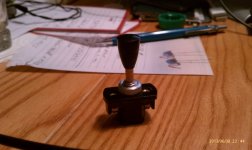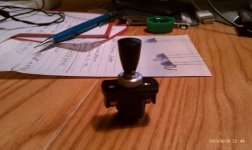biohazardman
100 kW
My bike is set up with an ebrake switch that has in 9K+ not failed me except in the no go mode. Just in case it did my controller is right under my seat and I installed, some have them already, a power switch for it that I can reach from my seat. It could be on the handlebars cuz as John and others have said it is very low amperage. In case both of those fail I have a battery switch, could be an Anderson or other connector type of jumper, that I can reach from my seat to disconnect the batts from the system. These three items are all very common and on many bikes if not most on the forum. Being able to pull the front wheel off the ground is a two edged sword it looks really cool but is very dangerous.
I hope you can figure something out that will make you feel safe again. Injuries make you cautious for awhile for good reason. Me I learned not to ride near full speed with slicks in the snow. Only took three months for my arms to heal from that crash. Helmets are good indeed.
I hope you can figure something out that will make you feel safe again. Injuries make you cautious for awhile for good reason. Me I learned not to ride near full speed with slicks in the snow. Only took three months for my arms to heal from that crash. Helmets are good indeed.



